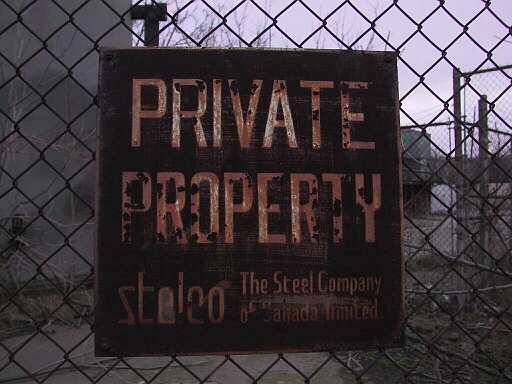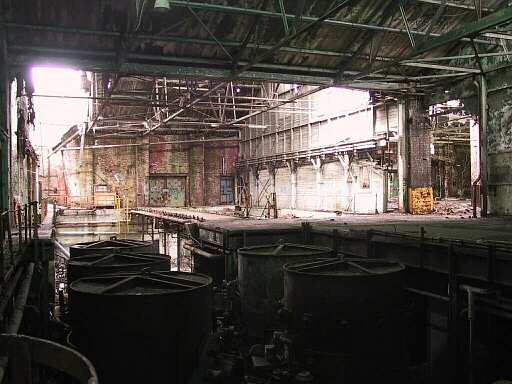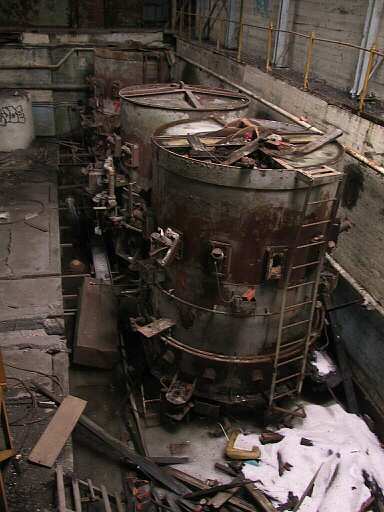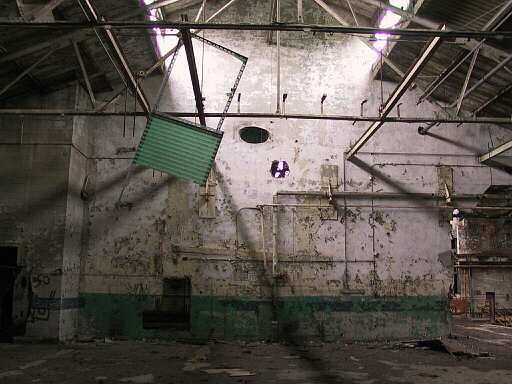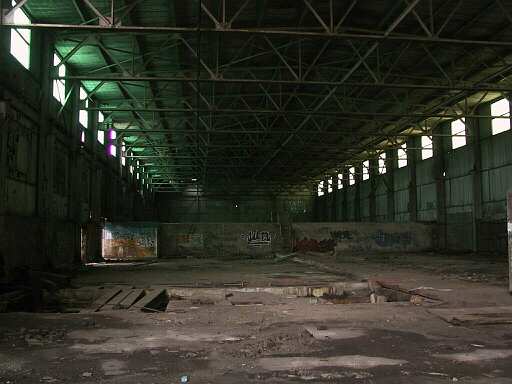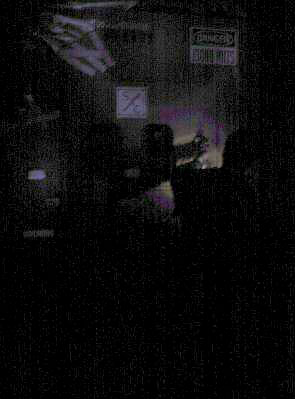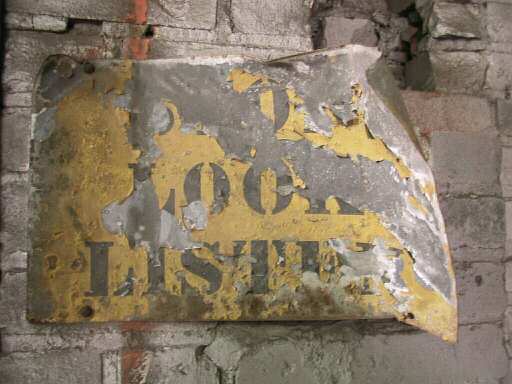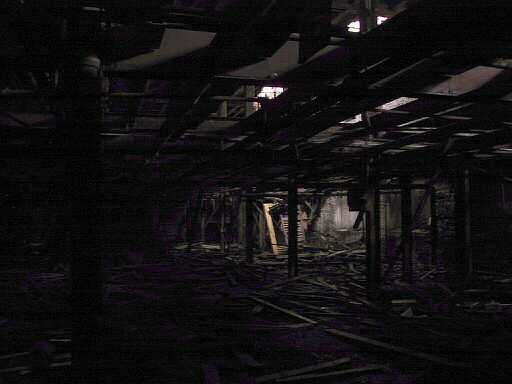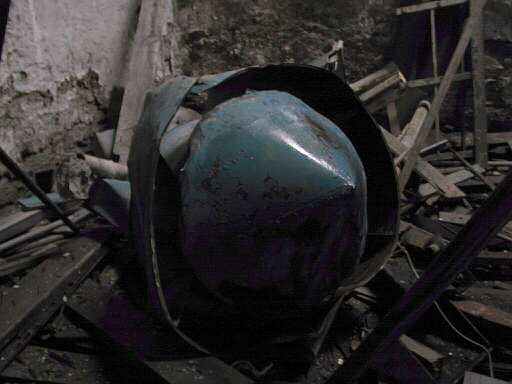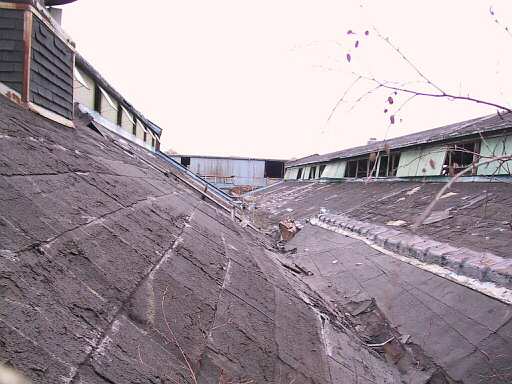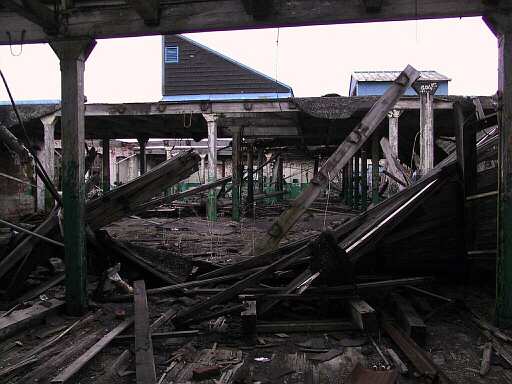 | ||||||||||||||||||||||
 |
Home Zine Forums Journal Search Contact Book |
|
Journal: Stelco Canada Works
When I accompanied Pouch, Lost Flock and PotLAN on their second trip to the mill, I saw that the elements had not been kind to the building over the past 18 years. The huge rusting hulk, which spreads over several acres between a prison and a hospital, looks on the verge of collapse — except for a few bits, which have already collapsed. Fortunately, the security level is about what you'd expect for a neglected ruin, and we were easily able to slip inside.
Once inside, I was blown away by the size and beauty of the place, but also alarmed at all the noise. It sounded to me like the place was full of people having a noisy party, but it turned out the noise was just large flaps of corrugated plastic or sheet metal blowing freely in the wind and loudly slapping the building.
The concrete floors we were walking on seemed stable enough, in spite of large cracks and random person-sized holes every now and then, but I couldn't vouch for the structural integrity of anything else, including the disintegrating brick walls, the wooden stairs, the rusty metal ladders, and the haphazard mismash of wood, shingles and tar that made up the roof. Large sections of the roof were missing, and everything was wet from recently melted ice and snow.
But the place was beautiful — truly decay at its finest. The gargantuan rooms were so large that it was hard to take them all in at once... and there were also multiple levels to tempt us. On the way to the mill, Lost Flock had bought a can of pop for himself for a "quick sugar rush". Those who know Flock know that he needs a sugar rush like Genghis Khan needs assertiveness training. Moments after we got inside he climbed up the wall to the second floor and then disappeared up into the rafters in search of the roof while Pouch and PotLAN showed me some of the spectacular sights they'd already seen on their last trip.
After visits to the burnt-out room, the peeling paint cave, the BJ room, and other tourist attractions, we headed down to the darkened basements, where we had to wade our way through a sea of boards and rusty nails that had fallen down from the floors above us.
After seeing what there was to see down here, we made our way up to the boiler room, where we climbed up a boiler tank, through a small hole in the ceiling into a square brick room, then up through a hole in the ceiling out to the roof — the real roof, the good one, with a great view of most of the mill and the area around it. We were fairly exposed, however, and some nearby graffiti commanded "don't fuck around", so we soon headed back down.
Next we commenced our tour of what remained of the second floor. This was probably my least favourite part of the trip; it was certainly the riskiest. Although signs on the wall assured me the floors could handle loads of 15,000 pounds, gaping holes in the wooden floor, coupled with abundant evidence of past fires, floods, and collapses, made me think those signs might be overestimating things by 14,800 pounds or so. What remains of the second floor is going to collapse sometime in the next five years or so, and it's more likely to happen while someone's up there for a stroll than not. I was happy when we made our way over the skyway, down the stairs, and back to solid ground. We cheerfully made our way back out to civilization shortly afterwards. Continue Back in Journal | Switch to Journal Index
|
